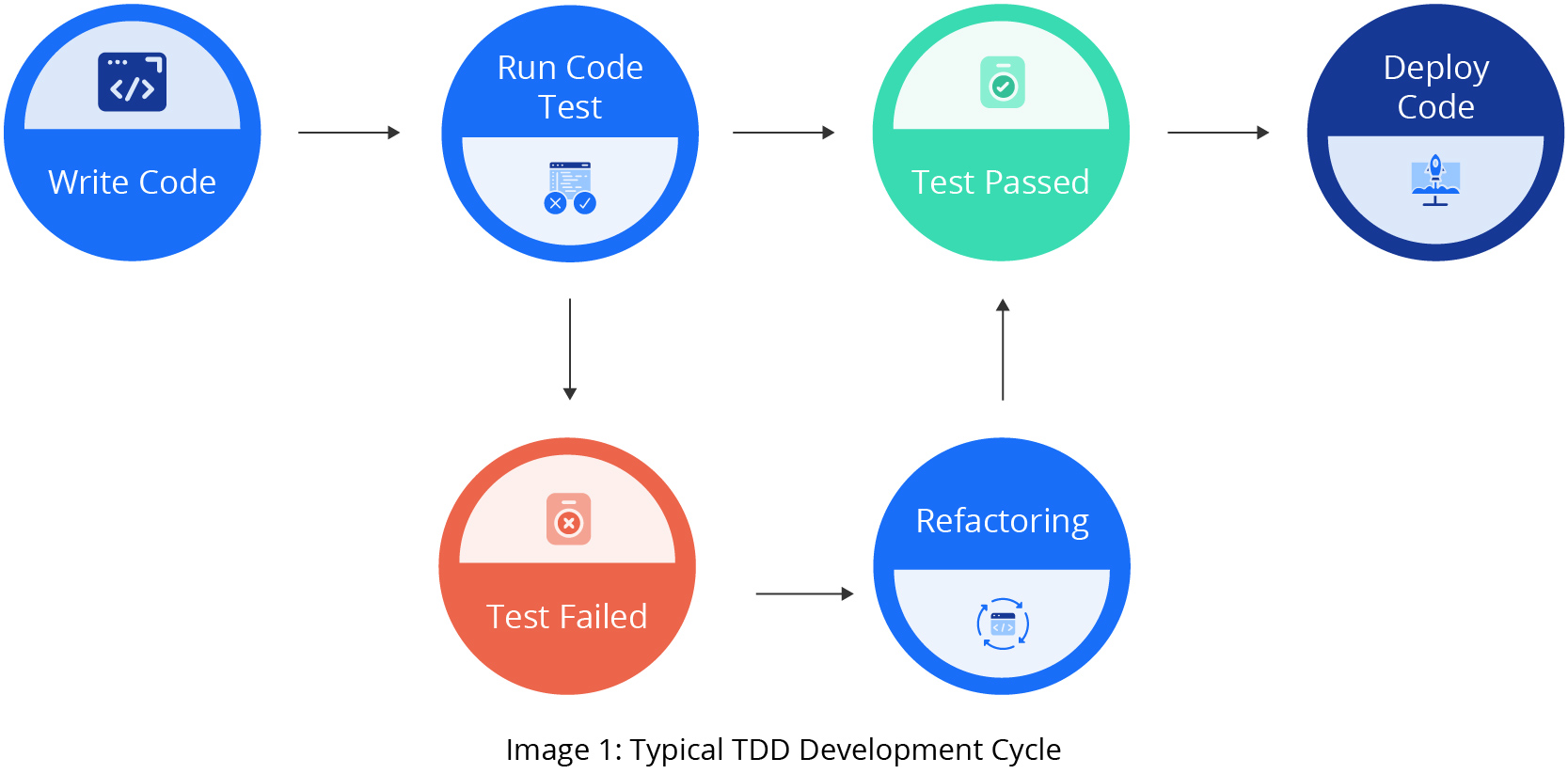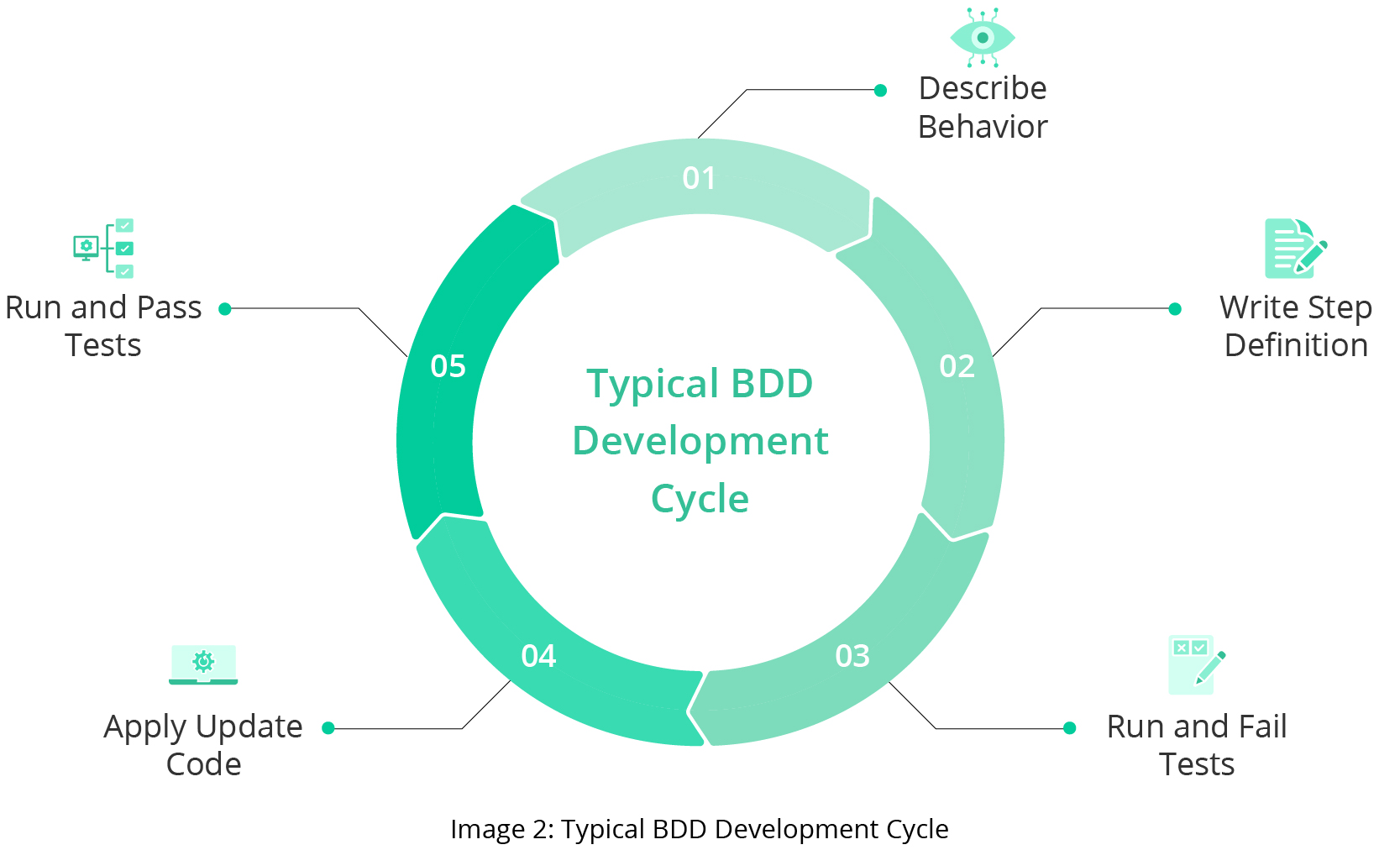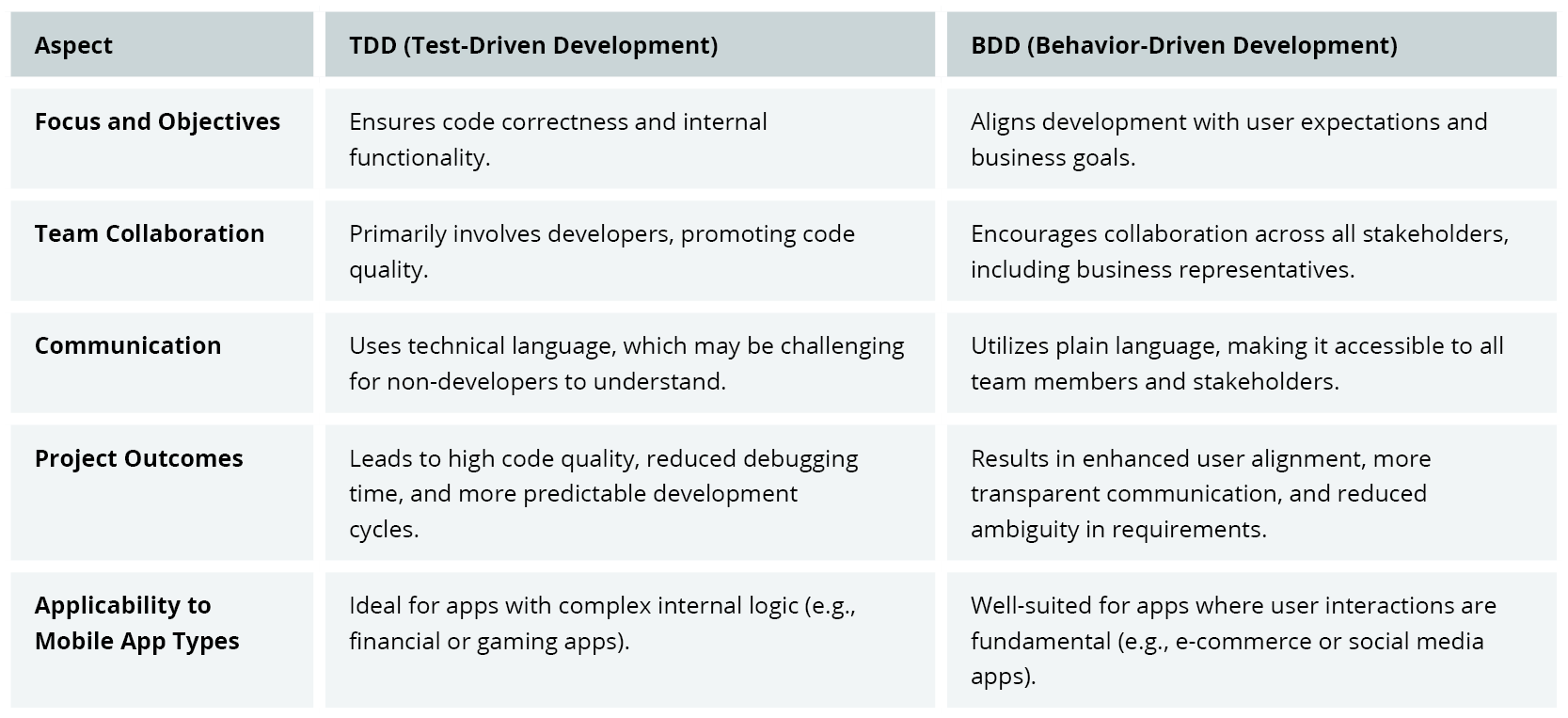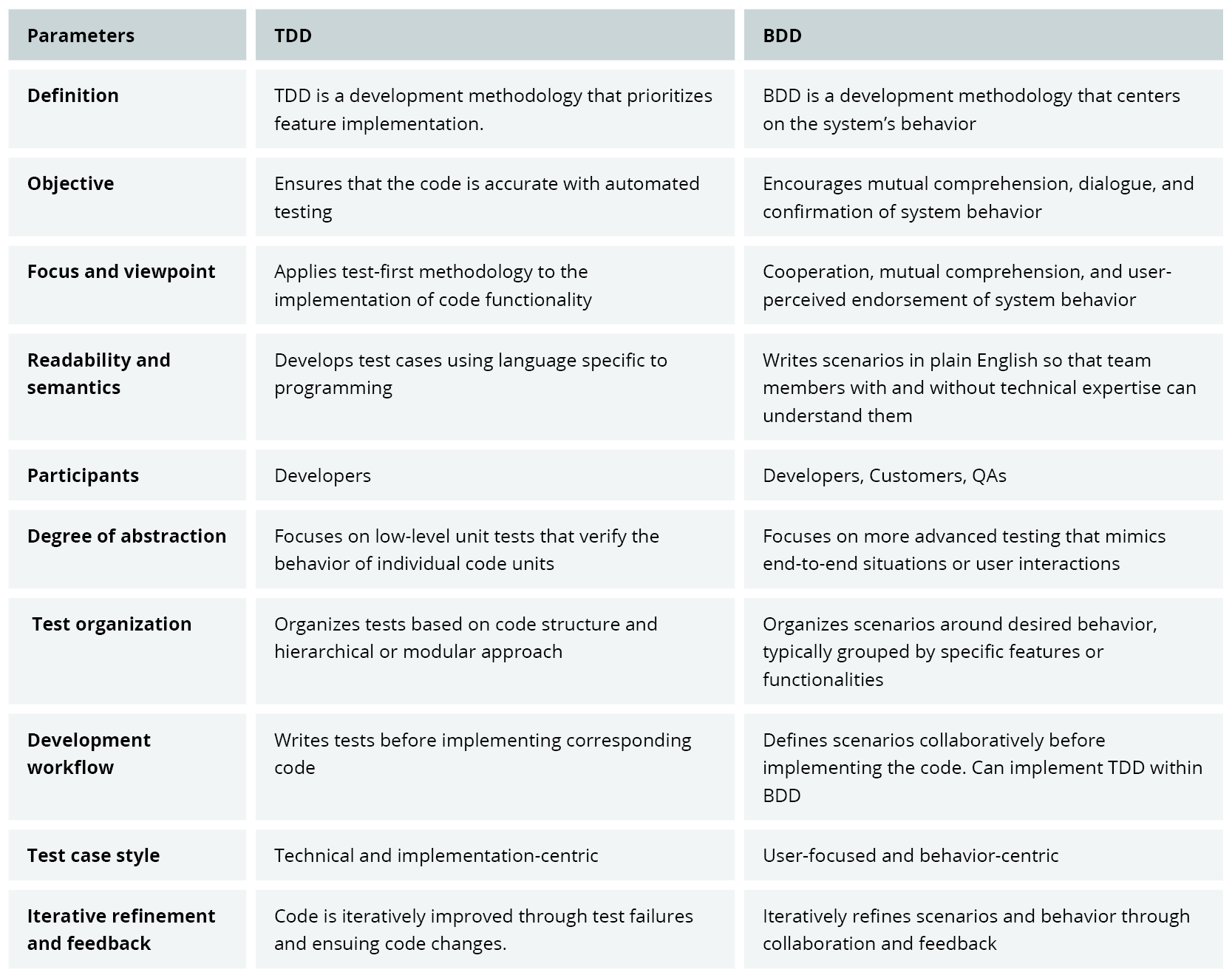TDD vs BDD for Mobile: Aligning Test Strategies with Business Goals
Discover how Test-Driven and Behavior-Driven Development improve app quality and team alignment. Learn to select testing strategies that maximize ROI, minimize risk, and satisfy user needs.
Understanding the difference between Test-Driven Development (TDD) and Behavior-Driven Development (BDD) as mobile testing strategies is crucial for technical business managers as it directly impacts project outcomes, team dynamics, and alignment with business goals. Recognizing the distinctions allows you to make informed decisions about which approach best suits your project's needs, balancing technical excellence with business value. This knowledge enables more effective resource allocation, risk management, and ensures that your final product not only functions correctly but also meet user expectations and business objectives.
Test-Driven Development (TDD)
TDD is a development approach where tests are written before the actual code implementation. This approach focuses on code quality and technical implementation, leading to robust, maintainable software but may lack a direct business perspective. It follows a cycle known as "Red-Green-Refactor":
- Red: Write a failing test for a new feature.
- Green: Implement the minimal code to make the test pass.
- Refactor: Clean up and optimize the code while keeping tests passing

Behavior-Driven Development (BDD)
BDD emphasizes user behavior and business requirements. It encourages collaboration between non-technical stakeholders, testers, and developers. BDD scenarios are typically written in a "Given-When-Then" format:
- Given: The initial context
- When: The action taken
- Then: The expected outcome

Business Implications of TDD and BDD in Mobile App Development
The TDD and BDD approaches differ in focus, team collaboration, communication style, project outcomes, and applicability to various mobile apps. This comparison will provide valuable insights to align your testing strategy with your business objectives and project requirements.

TDD vs. BDD: Challenges, Benefits and Best Practices for Best ROI
While TDD and BDD offer significant benefits, they also have unique challenges in the mobile app development landscape. Understanding how to address these challenges is crucial to maximize the use of valuable engineering resources. Additionally, adhering to best practices can improve the effectiveness of your chosen testing approach. Examining the common hurdles faced in TDD and BDD for mobile apps, along with understanding practical solutions, benefits, and industry-proven best practices, can help you optimize your testing strategy and deliver high-quality mobile applications.
TDD Challenges, Benefits and Best Practices
Let's now examine key aspects of implementing Test Driven Development in mobile app development. This will offer insights that can help you streamline your development process and maximize your return on investment (ROI).
TDD Challenges
- Device fragmentation: necessitates testing across various screen sizes and operating systems, which you can address by utilizing a combination of emulators and physical devices for comprehensive testing.
- Performance issues: particularly in UI-related tests, can slow the development process. To mitigate this, it's essential to implement efficient testing strategies and prioritize critical tests, ensuring that the testing process doesn't become a bottleneck in your development pipeline.
TDD Benefits
- Promotes high code quality: by validating each feature as it's developed, which is particularly crucial in the mobile space where user expectations for performance and reliability are high.
- Reduced debugging time: as tests are written before the code itself. This proactive approach is especially valuable in mobile app development, where complex interactions with hardware and operating systems can often lead to hard-to-trace bugs.
- Predictable development cycles: TDD's iterative nature results in more predictable development cycles, allowing for better management of timelines and deliverables - a key factor in meeting market demands and controlling development costs.
TDD Best Practices
- Leverage platform-specific testing tools: using tools like Espresso for Android and XCTest for iOS which are designed to work seamlessly with their respective platforms, ensuring more accurate and efficient testing.
- Automate your testing process: by integrating tests into your continuous integration (CI) pipeline. This practice saves time and ensures that tests are consistently run during each build, catching potential issues early in the development cycle.
- Maintain comprehensive test coverage: including edge cases and error conditions. This approach significantly improves app reliability, reducing the risk of post-launch issues that could damage your app's reputation and user satisfaction.
BDD Challenges, Benefits, and Best Practices
Behavior-Driven Development offers a user-centric approach that aligns development efforts with business goals and user expectations. Let's examine the challenges, benefits, and best practices of implementing BDD in mobile app development and how they can drive business value.
BDD Challenges
- Managing Scenario Complexity: Mobile apps often involve intricate user interactions, leading to complex test scenarios. From a business perspective, this complexity can translate to increased development time and potential misalignment with user needs. The solution lies in breaking down scenarios into smaller, more manageable parts. This approach simplifies testing and allows for more agile development cycles, enabling quicker responses to market changes and user feedback.
- Streamlining Tool Integration: Integrating BDD tools with mobile testing frameworks can be technically challenging, potentially causing delays and increasing project costs. Invest in tools that support seamless integration with popular mobile testing frameworks to mitigate this.
BDD Benefits
- Enhancing User Alignment: BDD's focus on user behavior ensures that critical features like navigation and notifications are developed in line with user expectations and business requirements. This alignment can lead to higher user satisfaction and increased app adoption rates.
- Facilitating Clear Communication: BDD scenarios are written in natural language, bridging the gap between technical and non-technical stakeholders. This clarity in communication can reduce misunderstandings, minimize costly rework, and ensure that the final product aligns closely with business objectives.
- Reducing Requirement Ambiguity: By defining expected behavior in plain language, BDD significantly reduces ambiguity in requirements. For businesses, this translates to more accurate development, fewer revisions, and a product that more closely meets market needs.
BDD Best Practices
- Stakeholder Collaboration: Actively engage all stakeholders, including business representatives, in writing and reviewing BDD scenarios. This inclusive approach ensures that app development leads to a more successful product launch and better market reception.
- Leveraging BDD Frameworks: Implement tools like Cucumber or SpecFlow to automate BDD scenarios and integrate them into your testing process. This automation can lead to faster development cycles, more consistent quality, and the ability to adapt quickly to changing market demands or user feedback.
- Focusing on Comprehensive User Journeys: Develop scenarios that cover entire user journeys, from initial login to completing transactions. This holistic approach ensures a thorough understanding of app behavior, potentially reducing post-launch issues, improving user experience, and ultimately contributing to better app store ratings and user retention.
Hybrid Approach
A hybrid approach that combines TDD and BDD can be effective in mobile app development. For example, you might use TDD for low-level unit tests and BDD for high-level scenarios that capture user behavior and business requirements. This approach ensures both robust code quality and alignment with user needs.
Consider combining TDD and BDD for a comprehensive enhancement to your mobile testing strategies:
- Use TDD for low-level unit tests and complex internal logic.
- Apply BDD for high-level scenarios that capture user behavior and business requirements.
TDD and BDD Use Cases
To give you a better idea where the TDD or BDD might fit in a real-world scenario, have a look at these usage examples drawn from actual case studies:
- Health & Fitness App (TDD): TDD was used to ensure accurate tracking of workouts, nutrition data, and personalized recommendations.
- E-commerce App (BDD): BDD scenarios were created for product searches, cart management, and checkout processes, ensuring alignment with user expectations.
- Social Media Platform (TDD): TDD handled complex features like real-time notifications and media uploads, resulting in a stable and reliable application.
- Ride-Sharing App (BDD): BDD was employed to define user interactions such as booking rides and tracking drivers, ensuring a seamless user experience.
Key Differences Between TDD and BDD
Table 2 summarizes the key differences between TDD and BDD.

Conclusion
Choosing between Test-Driven Development and Behavior-Driven Development—or implementing a hybrid approach—depends on your project's specific needs, team dynamics, and business goals. TDD offers robust code quality and maintainability, while BDD ensures alignment with user needs and business objectives.
Understanding these methodologies provides valuable insights into project outcomes and team collaboration. By leveraging the strengths of TDD and BDD, your organization can achieve a balanced approach to mobile app development, ensuring high-quality code, positive user experiences, and alignment with business objectives.
Remember, the key to success lies in adapting these methodologies to your specific context and continuously refining your approach based on project feedback and evolving business needs.



